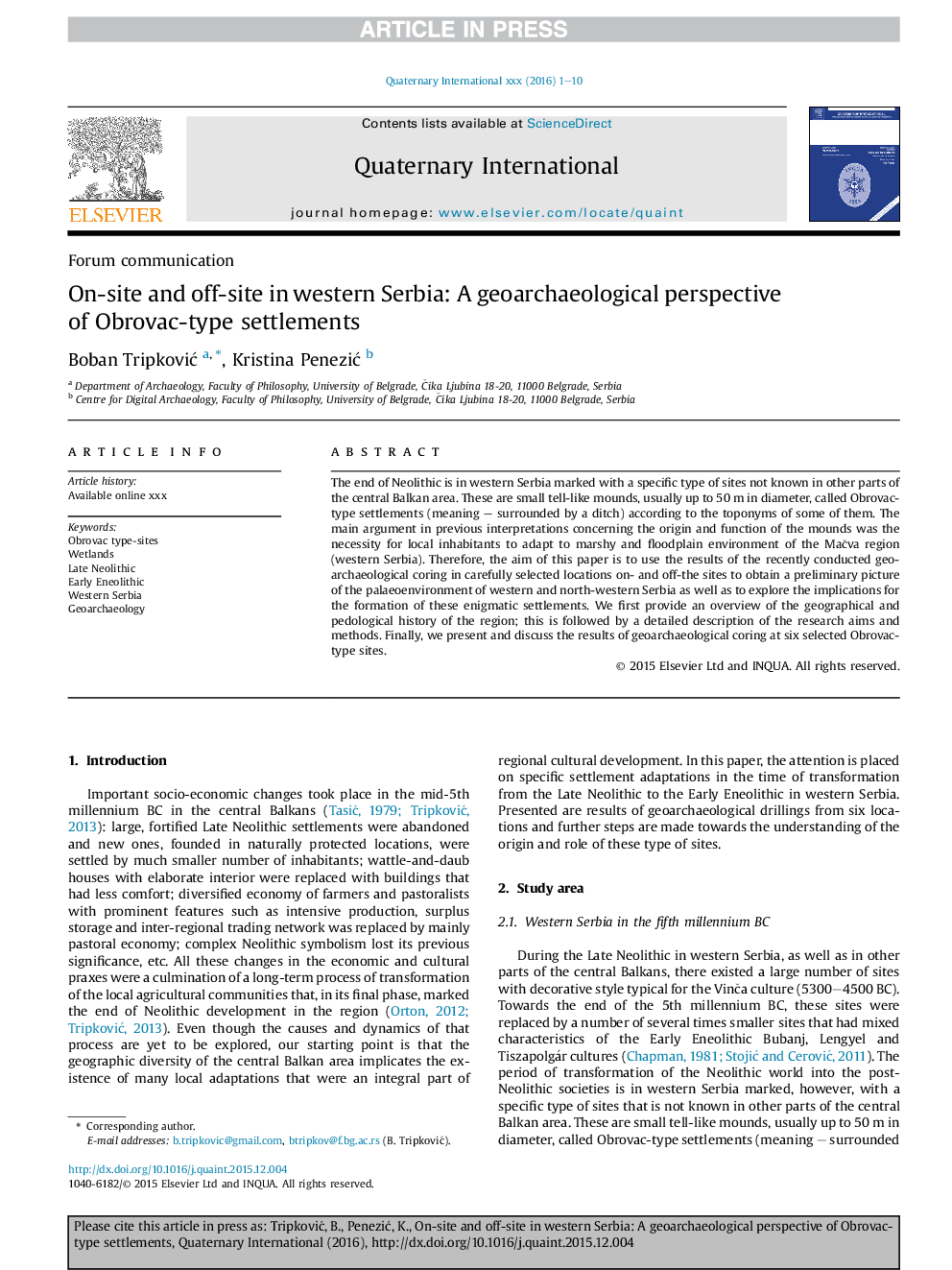| Article ID | Journal | Published Year | Pages | File Type |
|---|---|---|---|---|
| 5113808 | Quaternary International | 2017 | 10 Pages |
Abstract
The end of Neolithic is in western Serbia marked with a specific type of sites not known in other parts of the central Balkan area. These are small tell-like mounds, usually up to 50Â m in diameter, called Obrovac-type settlements (meaning - surrounded by a ditch) according to the toponyms of some of them. The main argument in previous interpretations concerning the origin and function of the mounds was the necessity for local inhabitants to adapt to marshy and floodplain environment of the MaÄva region (western Serbia). Therefore, the aim of this paper is to use the results of the recently conducted geoarchaeological coring in carefully selected locations on- and off-the sites to obtain a preliminary picture of the palaeoenvironment of western and north-western Serbia as well as to explore the implications for the formation of these enigmatic settlements. We first provide an overview of the geographical and pedological history of the region; this is followed by a detailed description of the research aims and methods. Finally, we present and discuss the results of geoarchaeological coring at six selected Obrovac-type sites.
Keywords
Related Topics
Physical Sciences and Engineering
Earth and Planetary Sciences
Geology
Authors
Boban TripkoviÄ, Kristina PeneziÄ,
